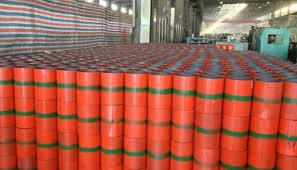- Afrikaans
- Albanian
- Amharic
- Arabic
- Armenian
- Azerbaijani
- Basque
- Belarusian
- Bengali
- Bosnian
- Bulgarian
- Catalan
- Cebuano
- Corsican
- Croatian
- Czech
- Danish
- Dutch
- English
- Esperanto
- Estonian
- Finnish
- French
- Frisian
- Galician
- Georgian
- German
- Greek
- Gujarati
- Haitian Creole
- hausa
- hawaiian
- Hebrew
- Hindi
- Miao
- Hungarian
- Icelandic
- igbo
- Indonesian
- irish
- Italian
- Japanese
- Javanese
- Kannada
- kazakh
- Khmer
- Rwandese
- Korean
- Kurdish
- Kyrgyz
- Lao
- Latin
- Latvian
- Lithuanian
- Luxembourgish
- Macedonian
- Malgashi
- Malay
- Malayalam
- Maltese
- Maori
- Marathi
- Mongolian
- Myanmar
- Nepali
- Norwegian
- Norwegian
- Occitan
- Pashto
- Persian
- Polish
- Portuguese
- Punjabi
- Romanian
- Russian
- Samoan
- Scottish Gaelic
- Serbian
- Sesotho
- Shona
- Sindhi
- Sinhala
- Slovak
- Slovenian
- Somali
- Spanish
- Sundanese
- Swahili
- Swedish
- Tagalog
- Tajik
- Tamil
- Tatar
- Telugu
- Thai
- Turkish
- Turkmen
- Ukrainian
- Urdu
- Uighur
- Uzbek
- Vietnamese
- Welsh
- Bantu
- Yiddish
- Yoruba
- Zulu
what is a pup joint
Understanding Pup Joints A Key Component in Oil and Gas Operations
In oil and gas drilling operations, efficiency and precision are paramount in ensuring the success of a project. One essential component that plays a critical role in the integrity and effectiveness of these operations is the pup joint. While often overlooked, pup joints are vital in connecting various sections of drill pipes and ensuring optimal drilling performance.
What is a Pup Joint?
A pup joint is a short segment of pipe that is typically used in drilling operations to make up for any shortage in length when connecting to other drill pipe sections. It can be described as a type of casing that is shorter than standard pipe lengths but serves the same purpose transferring fluids, handling pressure, and providing structural integrity. While they are classified under the broader category of casing and tubing, their specific design and functionality aid in optimizing drilling operations.
Pup joints can vary in length but are usually designed to be less than 10 feet in length. They connect standard lengths of pipe to reach the desired depth or configuration required for drilling operations or transportation of fluids. The ability to customize the length and fit of pup joints allows operators to make specific adjustments tailored to the unique requirements of a drilling site.
Why Are Pup Joints Important?
Pup joints are crucial for several reasons
1. Flexibility and Adaptability During drilling operations, specific needs may arise regarding pipe lengths due to changes in the geological formation or drilling plans. Pup joints provide the flexibility to achieve the ideal configuration without needing to replace entire lengths of drill pipe.
2. Efficiency in Drilling Their use can significantly reduce downtime during operations. When a well reaches a certain depth and additional length is necessary, inserting a pup joint can help achieve this quickly, thereby minimizing delays and maximizing productivity.
what is a pup joint

3. Cost-Effectiveness Purchasing a pup joint, which is considerably cheaper than replacing longer sections of pipe, can be a cost-effective solution for certain drilling situations. This is particularly important in a field where managing budgets and resources is critical to overall project success.
4. Enhanced Safety Implementing the correct length of pup joints helps maintain the overall balance and structural integrity of the drilling rig. Properly installed joints reduce the risk of failure and subsequent hazards that could arise from using improperly fitted or mismatched pipe lengths.
Types of Pup Joints
Pup joints come in various types and materials, depending on their specific use
- Standard Pup Joints These are often made from steel and can be used in various drilling applications. - Non-Metallic Pup Joints In some cases, non-metallic materials may be utilized, especially in environments sensitive to corrosion or specific chemical exposure.
- Sleeve Pup Joints Designed for particular applications, sleeve pup joints can be customized to protect against fluid loss and increase the strength of the connection.
Conclusion
In summary, while pup joints may not receive as much attention as other components involved in drilling, their role is undeniably crucial to the overall success of oil and gas operations. By providing versatility, enhancing efficiency, and promoting safety, pup joints contribute significantly to the operational capabilities of drilling rigs. Understanding and implementing the correct use of pup joints can lead to better performance, lower costs, and a more efficient drilling process overall. As the industry continues to evolve, the importance of such components will only become more pronounced, highlighting the need for ongoing education and awareness regarding their role in modern energy production.
-
Tubing Pup Joints: Essential Components for Oil and Gas OperationsNewsJul.10,2025
-
Pup Joints: Essential Components for Reliable Drilling OperationsNewsJul.10,2025
-
Pipe Couplings: Connecting Your World EfficientlyNewsJul.10,2025
-
Mastering Oilfield Operations with Quality Tubing and CasingNewsJul.10,2025
-
High-Quality Casing Couplings for Every NeedNewsJul.10,2025
-
Boost Your Drilling Efficiency with Premium Crossover Tools & Seating NipplesNewsJul.10,2025







